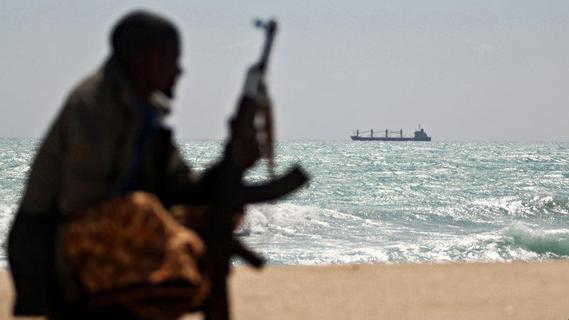
April 2013
While an international coalition of nations has banded together to combat the problem of piracy in East Africa, it appears that the overall cost of this scourge has been underestimated.
While it is well documented that ransoms alone account for about $53 million USD a year in losses, the total number goes far beyond that. Shipping companies lose cargo, are forced to travel at higher, less fuel-efficient speeds, and have to pay sky-high insurance premiums for risky voyages.
While Oceans Beyond Piracy, an American piracy watch-dog organization estimated the total cost to be $6 billion in 2012, the World Bank estimated the cost to be closer to $18 billion per year. This takes into consideration data from 2005 to 2011.
The number of successful attacks have dwindled due to better security practices from the shipping companies — including hiring armed guards for their vessels — as well as a massive international fleet patrolling the Indian Ocean. But this doesn’t mean the problem has gone away; much of the focus has been on the symptoms at sea, not the root cause on land.
Because of the decreasing success of pirate attacks, not anyone can get into the game anymore. Only well-established and well-funded pirates can absorb the financial, personnel and equipment losses incurred from a fail raid and a captured or killed skiff full of pirates.
The has an important effect on piracy itself– it means only the big-time pirate bosses are still in business. But it also means that if a young man wants to get into piracy, he cannot simply get a skiff and gather some of his friends to go hijack the nearest boat– that used to work, but it won’t any more. Now, he needs to join an established pirate organization with advanced operational capacity if he has any hope of striking it rich, or simply just surviving. So he becomes an entry-level pirate one of the few left organizations.
Unfortunately, with a large influx of entry level pirates, the bosses use this disposable human-resource rather recklessly. If they’re caught or killed, there will be someone to replace them, and always another ship to hijack.
This is why the next step of the process needs to be the pursuit of pirate bosses on land, not on sea. Just like any other criminal organization, the man behind the curtains who holds the true power is rarely operating out in the open.
While international task forces could theoretically accomplish this mission, the “coalition of the willing” is very thin when it comes to having a military presence in an unstable foreign country. If recent memories of Iraq and Afghanistan aren’t enough to cause international powers to shy away, one doesn’t need to go back far to see this kind of disaster in Somali itself– U.S. peacekeepers fumbled at restoring stability to the country in the early 1990’s.
But stability is exactly what Somalia needs, although it doesn’t need it inserted from the outside. The only way to solve the problem of piracy is to build stability from within the country. Having emerged from decades of civil war with numerous opponents, the Somali central government finally has a chance to establish itself for the first time in decades.
Once established, the country can go about cleaning up the pirates by hunting down the bosses. But even more than that, it can stabilize the economy and provide better options for the poor youth currently have no alternative to a pirate life.